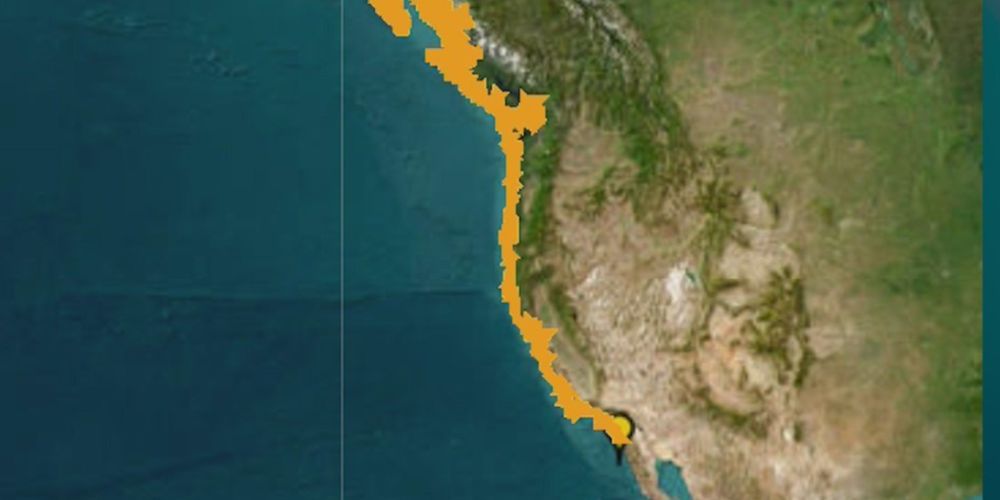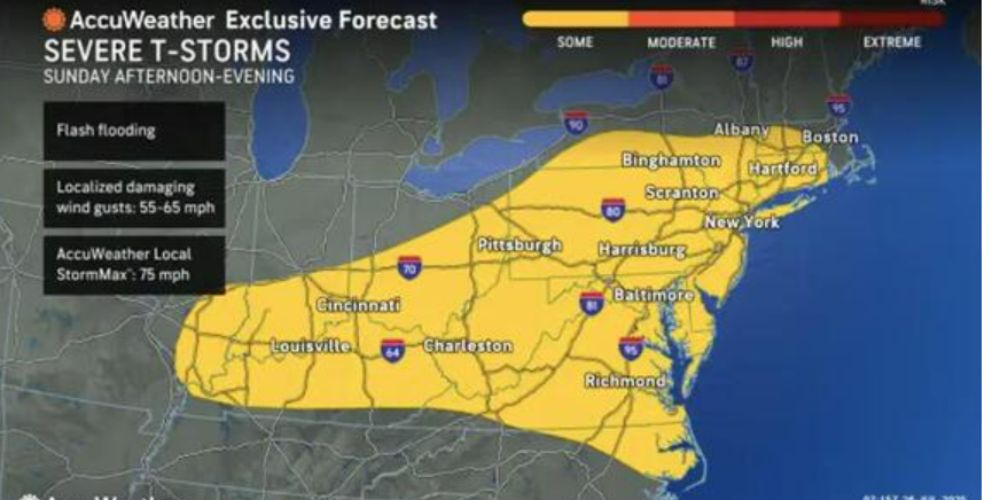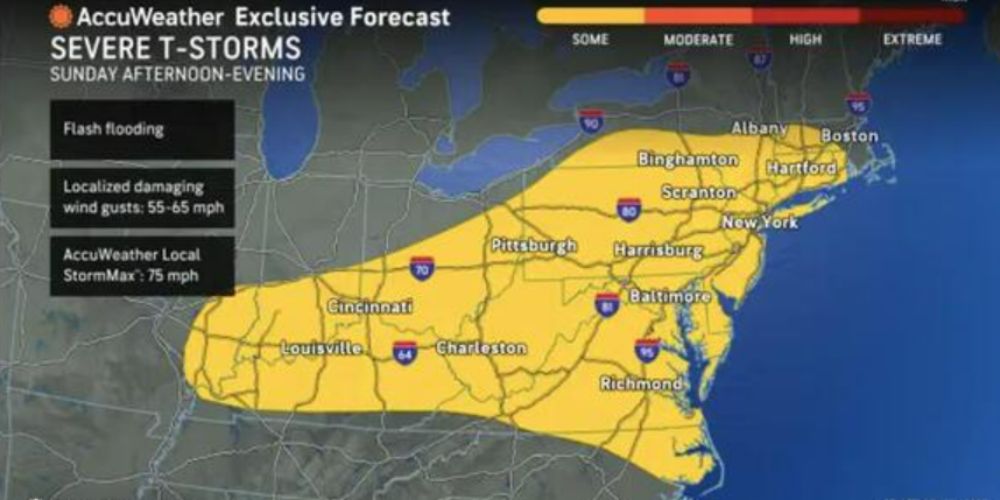Several states along the United States Eastern Seaboard are bracing for torrential rain and other consequences this week as National Hurricane Center (NHC) meteorologists monitor a disturbance off the East Coast that might intensify into Tropical Storm Erin by the end of the week.
Why It Matters
The National Hurricane Center is now following three systems in the Atlantic Ocean: Tropical Storm Dexter, which is moving further out to sea, and two disturbances, one in the central tropical Atlantic and one building considerably closer to the United States. Each of these disturbances has a moderate possibility of intensifying into a tropical storm in the following days.
Even if the system closest to the United States does not develop into a tropical storm, it is predicted to send tropical rain and wind to at least two states.
What To Know
This week, AccuWeather released a map depicting the likelihood of tropical impacts in the following days. The coasts of South Carolina and North Carolina face a medium risk of tropical rain and wind in the coming days, the highest on the Eastern Seaboard. The Virginia coast is at low risk, whereas Maryland north of Maine is almost completely safe.
According to AccuWeather Lead Hurricane Expert Alex DaSilva, the system off the Southeast coast first appeared to bend toward the United States, but it now appears to be traveling parallel to the shore.
Despite moving inland, AccuWeather expects a wet pattern with thunderstorms to end this week in the Southeast. AccuWeather predicts more heavy rain throughout the Southeast, including states like South Carolina and North Carolina, which have already received several inches of rain this month.
Further south, Georgia and Florida are at minimal risk. Louisiana, Alabama, and Mississippi have a low probability of such consequences from a separate Gulf system being studied by AccuWeather meteorologists and expected to develop between August 10 and 12.
Weather experts have repeatedly warned this summer that the peak Atlantic hurricane season does not generally occur until September, asking people to take preventative measures, such as stockpiling emergency supplies and ensuring they have adequate insurance, before a storm arises.
The National Oceanic and Atmospheric Administration (NOAA) forecasts 13 to 19 named storms for this year’s Atlantic hurricane season, with six to ten developing into hurricanes and three to five becoming major hurricanes.
What Happens Next
The disturbance closest to the United States has a 10% chance of developing into a tropical storm within the next 48 hours. It has a 40% chance of doing so over the next seven days. NHC authorities will continue to watch the system, even if there are no hurricane or tropical storm warnings in effect for the United States as of Wednesday morning.











Leave a Comment